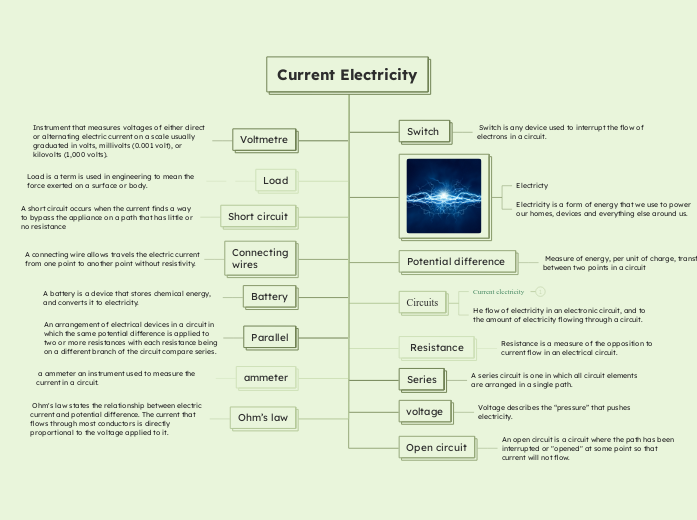Current Electricity
Switch
Switch is any device used to interrupt the flow of electrons in a circuit.

Electricty
Electricity is a form of energy that we use to power our homes, devices and everything else around us.
Potential difference
Measure of energy, per unit of charge, transferred between two points in a circuit
Circuits
Current electricity
He flow of electricity in an electronic circuit, and to the amount of electricity flowing through a circuit.
Resistance
Resistance is a measure of the opposition to current flow in an electrical circuit.
Series
A series circuit is one in which all circuit elements are arranged in a single path.
voltage
Voltage describes the “pressure” that pushes electricity.
Open circuit
An open circuit is a circuit where the path has been interrupted or "opened" at some point so that current will not flow.
Voltmetre
Instrument that measures voltages of either direct or alternating electric current on a scale usually graduated in volts, millivolts (0.001 volt), or kilovolts (1,000 volts).
Load
Load is a term is used in engineering to mean the force exerted on a surface or body.
Short circuit
A short circuit occurs when the current finds a way to bypass the appliance on a path that has little or no resistance
Connecting
wires
A connecting wire allows travels the electric current from one point to another point without resistivity.
Battery
A battery is a device that stores chemical energy, and converts it to electricity.
Parallel
An arrangement of electrical devices in a circuit in which the same potential difference is applied to two or more resistances with each resistance being on a different branch of the circuit compare series.
ammeter
a ammeter an instrument used to measure the current in a circuit.
Ohm’s law
Ohm's law states the relationship between electric current and potential difference. The current that flows through most conductors is directly proportional to the voltage applied to it.
